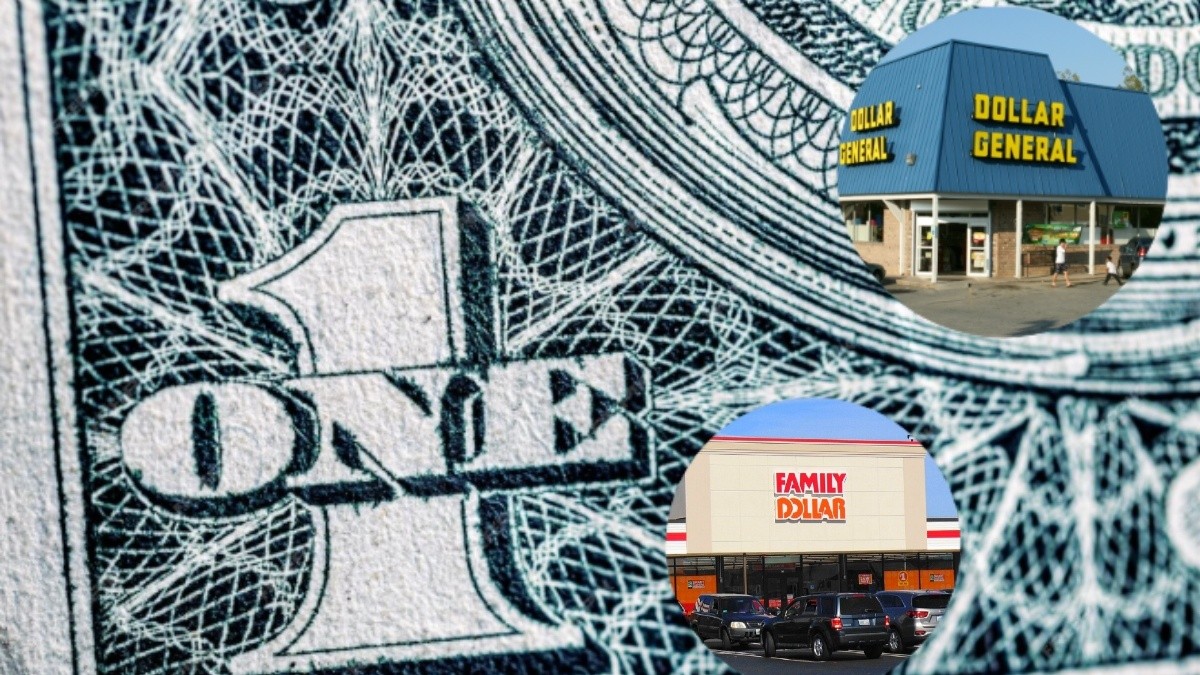If you’ve ever wondered how stores like
Dollar General
or
Family Dollar
manage to offer products, including food, at significantly lower prices than traditional supermarkets, the answer lies not in low-quality ingredients or dubious practices. Instead, it’s about an optimized business model and a series of strategies that make offering low prices profitable.
These stores operate in much smaller spaces than the average supermarket. While a standard Walmart exceeds 170,000 square feet, a Dollar General location averages just 7,400 square feet. Less space means lower rent, less energy, and fewer staff needed to operate. Additionally, they eliminate costly departments like bakeries, butcheries, or fresh produce—though Dollar General has started including more perishable foods in certain strategic locations. This simple structure reduces expenses and allows part of the savings to be passed on to the customer.
It’s common to see products in reduced packaging. Although the final price seems lower, often the cost per unit or weight is higher. For example, a 4.5 oz box of raisins costs less than a 72 oz one in a supermarket, but per ounce, the consumer pays more at the discount store. This packaging and presentation strategy allows them to maintain the perception of low prices, although the real benefit can vary depending on the product.
Dollar General and Family Dollar have expanded their presence in rural areas and low-income communities, often where alternatives like Walmart or large chains do not exist. For the consumer, this means convenience, although sometimes the price per unit is not the most competitive. In these so-called “food deserts,” dollar stores represent the only accessible option, becoming a viable solution for those who cannot travel long distances to shop.
Another factor contributing to maintaining low prices is the wage level of their employees. According to data from the Economic Policy Institute (2021), 92% of Dollar General employees earned less than $15 per hour, compared to 51% at Walmart or just 1% at Whole Foods. This wage difference allows for reduced operational costs, although it has also generated criticism about working conditions in these stores, which are often more exposed to minor crimes, according to police reports.
Dollar General has developed a variety of private labels, such as Clover Valley or Good & Smart, offering products at lower costs without sacrificing minimum quality standards. By controlling part of the production and supply chain, they can maintain lower prices than traditional brands. At the same time, major brands like Coca-Cola and Frito-Lay have begun adapting their packaging and offerings for this sales channel, recognizing its growth potential and access to a new consumer profile. What was once a marginal channel is now an integral part of these multinationals’ commercial strategy.
For you, as a consumer, Dollar General and Family Dollar can represent a quick and convenient way to access essential products without breaking the budget. But it’s important to pay attention to quantities and prices per unit, and know that true savings are not always in the lowest price, but in how much you get for that amount. These stores do not sacrifice quality, but they do employ a frugal and highly optimized model that prioritizes efficiency over the traditional shopping experience. In a challenging economic environment, their permanence and expansion seem assured.







